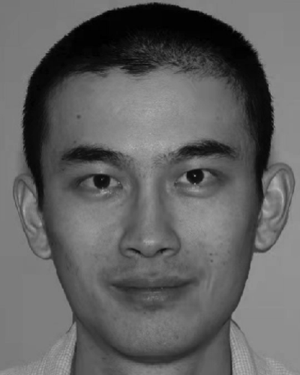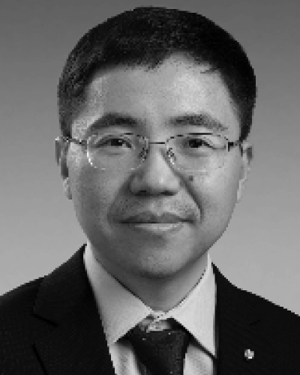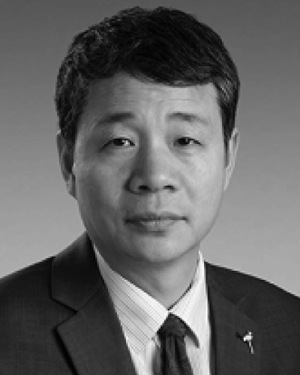Abstract:
In recent years, researchers have become more interested in hyperspectral image fusion (HIF) as a potential alternative to expensive high-resolution hyperspectral imaging...Show MoreMetadata
Abstract:
In recent years, researchers have become more interested in hyperspectral image fusion (HIF) as a potential alternative to expensive high-resolution hyperspectral imaging systems, which aims to recover a high-resolution hyperspectral image (HR-HSI) from two images obtained from low-resolution hyperspectral (LR-HSI) and high-spatial-resolution multispectral (HR-MSI). It is generally assumed that degeneration in both the spatial and spectral domains is known in traditional model-based methods or that there existed paired HR-LR training data in deep learning-based methods. However, such an assumption is often invalid in practice. Furthermore, most existing works, either introducing hand-crafted priors or treating HIF as a black-box problem, cannot take full advantage of the physical model. To address those issues, we propose a deep blind HIF method by unfolding model-based maximum a posterior (MAP) estimation into a network implementation in this paper. Our method works with a Laplace distribution (LD) prior that does not need paired training data. Moreover, we have developed an observation module to directly learn degeneration in the spatial domain from LR-HSI data, addressing the challenge of spatially-varying degradation. We also propose to learn the uncertainty (mean and variance) of LD models using a novel Swin-Transformer-based denoiser and to estimate the variance of degraded images from residual errors (rather than treating them as global scalars). All parameters of the MAP estimation algorithm and the observation module can be jointly optimized through end-to-end training. Extensive experiments on both synthetic and real datasets show that the proposed method outperforms existing competing methods in terms of both objective evaluation indexes and visual qualities.
Published in: IEEE Transactions on Image Processing ( Volume: 32)
Funding Agency:

School of Artificial Intelligence, Xidian University, Xi’an, China
Junwei Xu (Student Member, IEEE) received the B.S. degree in electronic engineering from Xidian University, Xi’an, China, in 2021, where he is currently pursuing the Ph.D. degree in computer science and technology. His current research interests include image restoration and deep learning.
Junwei Xu (Student Member, IEEE) received the B.S. degree in electronic engineering from Xidian University, Xi’an, China, in 2021, where he is currently pursuing the Ph.D. degree in computer science and technology. His current research interests include image restoration and deep learning.View more

School of Computer Science and Technology, Xidian University, Xi’an, China
Fangfang Wu (Member, IEEE) received the B.S. degree in electrical engineering, the M.S. degree in intelligent information processing, and the Ph.D. degree in electronics science and technology from Xidian University, Xi’an, China, in 2008, 2011, and 2021, respectively. In 2022, she joined the School of Computer Science and Technology, Xidian University. Her research interests include image restoration, hyperspectral imagi...Show More
Fangfang Wu (Member, IEEE) received the B.S. degree in electrical engineering, the M.S. degree in intelligent information processing, and the Ph.D. degree in electronics science and technology from Xidian University, Xi’an, China, in 2008, 2011, and 2021, respectively. In 2022, she joined the School of Computer Science and Technology, Xidian University. Her research interests include image restoration, hyperspectral imagi...View more

Department of Computer Science, University at Albany, Albany, NY, USA
Xin Li (Fellow, IEEE) received the B.S. degree (Hons.) in electronic engineering and information science from the University of Science and Technology of China, Hefei, in 1996, and the Ph.D. degree in electrical engineering from Princeton University, Princeton, NJ, USA, in 2000. He was a member of Technical Staff with Sharp Laboratories of America, Camas, WA, USA, from August 2000 to December 2002. Since January 2003, he ...Show More
Xin Li (Fellow, IEEE) received the B.S. degree (Hons.) in electronic engineering and information science from the University of Science and Technology of China, Hefei, in 1996, and the Ph.D. degree in electrical engineering from Princeton University, Princeton, NJ, USA, in 2000. He was a member of Technical Staff with Sharp Laboratories of America, Camas, WA, USA, from August 2000 to December 2002. Since January 2003, he ...View more

School of Artificial Intelligence, Xidian University, Xi’an, China
Weisheng Dong (Member, IEEE) received the B.S. degree in electronic engineering from the Huazhong University of Science and Technology, Wuhan, China, in 2004, and the Ph.D. degree in circuits and system from Xidian University, Xi’an, China, in 2010. He was a Visiting Student with Microsoft Research Asia, Beijing, China, in 2006. From 2009 to 2010, he was a Research Assistant with the Department of Computing, The Hong Kong...Show More
Weisheng Dong (Member, IEEE) received the B.S. degree in electronic engineering from the Huazhong University of Science and Technology, Wuhan, China, in 2004, and the Ph.D. degree in circuits and system from Xidian University, Xi’an, China, in 2010. He was a Visiting Student with Microsoft Research Asia, Beijing, China, in 2006. From 2009 to 2010, he was a Research Assistant with the Department of Computing, The Hong Kong...View more

School of Artificial Intelligence, Xidian University, Xi’an, China
Tao Huang received the B.S. degree in electronic engineering from Xidian University, Xi’an, China, in 2018, where he is currently pursuing the Ph.D. degree in electronic science and technology. His current research interests include image restoration and deep learning.
Tao Huang received the B.S. degree in electronic engineering from Xidian University, Xi’an, China, in 2018, where he is currently pursuing the Ph.D. degree in electronic science and technology. His current research interests include image restoration and deep learning.View more

School of Artificial Intelligence, Xidian University, Xi’an, China
Guangming Shi (Fellow, IEEE) received the B.S. degree in automatic control, the M.S. degree in computer control, and the Ph.D. degree in electronic information technology from Xidian University, Xi’an, China, in 1985, 1988, and 2002, respectively. In 1988, he joined the School of Electronic Engineering, Xidian University. From 1994 to 1996, he was a Research Assistant with the Department of Electronic Engineering, The Uni...Show More
Guangming Shi (Fellow, IEEE) received the B.S. degree in automatic control, the M.S. degree in computer control, and the Ph.D. degree in electronic information technology from Xidian University, Xi’an, China, in 1985, 1988, and 2002, respectively. In 1988, he joined the School of Electronic Engineering, Xidian University. From 1994 to 1996, he was a Research Assistant with the Department of Electronic Engineering, The Uni...View more

School of Artificial Intelligence, Xidian University, Xi’an, China
Junwei Xu (Student Member, IEEE) received the B.S. degree in electronic engineering from Xidian University, Xi’an, China, in 2021, where he is currently pursuing the Ph.D. degree in computer science and technology. His current research interests include image restoration and deep learning.
Junwei Xu (Student Member, IEEE) received the B.S. degree in electronic engineering from Xidian University, Xi’an, China, in 2021, where he is currently pursuing the Ph.D. degree in computer science and technology. His current research interests include image restoration and deep learning.View more

School of Computer Science and Technology, Xidian University, Xi’an, China
Fangfang Wu (Member, IEEE) received the B.S. degree in electrical engineering, the M.S. degree in intelligent information processing, and the Ph.D. degree in electronics science and technology from Xidian University, Xi’an, China, in 2008, 2011, and 2021, respectively. In 2022, she joined the School of Computer Science and Technology, Xidian University. Her research interests include image restoration, hyperspectral imaging, and deep image representation.
Fangfang Wu (Member, IEEE) received the B.S. degree in electrical engineering, the M.S. degree in intelligent information processing, and the Ph.D. degree in electronics science and technology from Xidian University, Xi’an, China, in 2008, 2011, and 2021, respectively. In 2022, she joined the School of Computer Science and Technology, Xidian University. Her research interests include image restoration, hyperspectral imaging, and deep image representation.View more

Department of Computer Science, University at Albany, Albany, NY, USA
Xin Li (Fellow, IEEE) received the B.S. degree (Hons.) in electronic engineering and information science from the University of Science and Technology of China, Hefei, in 1996, and the Ph.D. degree in electrical engineering from Princeton University, Princeton, NJ, USA, in 2000. He was a member of Technical Staff with Sharp Laboratories of America, Camas, WA, USA, from August 2000 to December 2002. Since January 2003, he has been a Faculty Member with the Lane Department of Computer Science and Electrical Engineering. In 2023, he joined the Department of Computer Science, University at Albany. He was elected as a fellow of IEEE in 2017, for his contributions to image interpolation, restoration, and compression.
Xin Li (Fellow, IEEE) received the B.S. degree (Hons.) in electronic engineering and information science from the University of Science and Technology of China, Hefei, in 1996, and the Ph.D. degree in electrical engineering from Princeton University, Princeton, NJ, USA, in 2000. He was a member of Technical Staff with Sharp Laboratories of America, Camas, WA, USA, from August 2000 to December 2002. Since January 2003, he has been a Faculty Member with the Lane Department of Computer Science and Electrical Engineering. In 2023, he joined the Department of Computer Science, University at Albany. He was elected as a fellow of IEEE in 2017, for his contributions to image interpolation, restoration, and compression.View more

School of Artificial Intelligence, Xidian University, Xi’an, China
Weisheng Dong (Member, IEEE) received the B.S. degree in electronic engineering from the Huazhong University of Science and Technology, Wuhan, China, in 2004, and the Ph.D. degree in circuits and system from Xidian University, Xi’an, China, in 2010. He was a Visiting Student with Microsoft Research Asia, Beijing, China, in 2006. From 2009 to 2010, he was a Research Assistant with the Department of Computing, The Hong Kong Polytechnic University, Hong Kong. In 2010, he joined the School of Electronic Engineering, Xidian University, as a Lecturer, where he has been a Professor since 2016. His research interests include inverse problems in image processing, sparse signal representation, and image compression. He was a recipient of the Best Paper Award from the SPIE Visual Communication and Image Processing (VCIP) in 2010. He has served as an Associate Editor for IEEE Transactions on Image Processing. He is currently an Associate Editor of SIAM Journal of Imaging Sciences.
Weisheng Dong (Member, IEEE) received the B.S. degree in electronic engineering from the Huazhong University of Science and Technology, Wuhan, China, in 2004, and the Ph.D. degree in circuits and system from Xidian University, Xi’an, China, in 2010. He was a Visiting Student with Microsoft Research Asia, Beijing, China, in 2006. From 2009 to 2010, he was a Research Assistant with the Department of Computing, The Hong Kong Polytechnic University, Hong Kong. In 2010, he joined the School of Electronic Engineering, Xidian University, as a Lecturer, where he has been a Professor since 2016. His research interests include inverse problems in image processing, sparse signal representation, and image compression. He was a recipient of the Best Paper Award from the SPIE Visual Communication and Image Processing (VCIP) in 2010. He has served as an Associate Editor for IEEE Transactions on Image Processing. He is currently an Associate Editor of SIAM Journal of Imaging Sciences.View more

School of Artificial Intelligence, Xidian University, Xi’an, China
Tao Huang received the B.S. degree in electronic engineering from Xidian University, Xi’an, China, in 2018, where he is currently pursuing the Ph.D. degree in electronic science and technology. His current research interests include image restoration and deep learning.
Tao Huang received the B.S. degree in electronic engineering from Xidian University, Xi’an, China, in 2018, where he is currently pursuing the Ph.D. degree in electronic science and technology. His current research interests include image restoration and deep learning.View more

School of Artificial Intelligence, Xidian University, Xi’an, China
Guangming Shi (Fellow, IEEE) received the B.S. degree in automatic control, the M.S. degree in computer control, and the Ph.D. degree in electronic information technology from Xidian University, Xi’an, China, in 1985, 1988, and 2002, respectively. In 1988, he joined the School of Electronic Engineering, Xidian University. From 1994 to 1996, he was a Research Assistant with the Department of Electronic Engineering, The University of Hong Kong, Hong Kong. Since 2003, he has been a Professor with the School of Electronic Engineering, Xidian University. In 2004, he was the Head of the National Instruction Base of Electrician and Electronic. From June 2004 to December 2004, he studied with the Department of Electronic Engineering, University of Illinois at Urbana–Champaign, Champaign, IL, USA. He is currently the Vice President of Xidian University and the Academic Leader in the subject of circuits and systems. He has authored or coauthored more than 60 research articles. His research interests include compressed sensing, theory and design of multirate filter banks, image denoising, low-bit-rate image/video coding, and implementation of algorithms for intelligent signal processing (using DSP and FPGA).
Guangming Shi (Fellow, IEEE) received the B.S. degree in automatic control, the M.S. degree in computer control, and the Ph.D. degree in electronic information technology from Xidian University, Xi’an, China, in 1985, 1988, and 2002, respectively. In 1988, he joined the School of Electronic Engineering, Xidian University. From 1994 to 1996, he was a Research Assistant with the Department of Electronic Engineering, The University of Hong Kong, Hong Kong. Since 2003, he has been a Professor with the School of Electronic Engineering, Xidian University. In 2004, he was the Head of the National Instruction Base of Electrician and Electronic. From June 2004 to December 2004, he studied with the Department of Electronic Engineering, University of Illinois at Urbana–Champaign, Champaign, IL, USA. He is currently the Vice President of Xidian University and the Academic Leader in the subject of circuits and systems. He has authored or coauthored more than 60 research articles. His research interests include compressed sensing, theory and design of multirate filter banks, image denoising, low-bit-rate image/video coding, and implementation of algorithms for intelligent signal processing (using DSP and FPGA).View more


